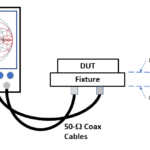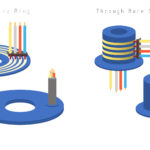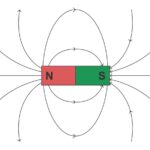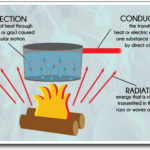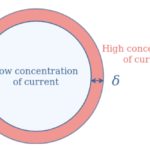Building on the work of others, particularly Humphry Davy, Hans Christian Ørsted and Alessandro Volta, English researcher Michael Faraday formulated his Law of Electromagnetic Induction. This most basic of all laws governing electromagnetism quantifies the interaction of a magnetic field and an electric circuit, producing electromotive force (EMF) or in the language of technicians and researchers today, voltage.
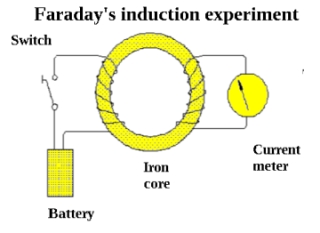
In Faraday’s iron ring apparatus, a change in the magnetic flux of the left coil induces a current in the right coil.
Joseph Henry, in America, independently discovered the same phenomenon in 1832, but because Faraday was first to publish his findings, he is generally credited with discovering electromagnetic induction. The law that bears his name may be stated simply: The induced EMF in a closed electrical circuit equals the negative of the rate of change of the magnetic flux enclosed by the circuit. This statement is not universally valid, however, strictly applying only when the electrical circuit is composed of an infinitely thin conductor.

Faraday’s law of induction. Here, ε is the electromotive force and ΦB is the magnetic flux.

The Maxwell–Faraday equation generalizes Faraday’s law. Here ∇ is the curl operator, E is the electric field, B is the magnetic field. These fields can generally be functions of position and time.

The integral form of the Maxwell-Faraday equation where Σ is a surface bounded by the closed contour ∂Σ, dℓ is an infinitesimal vector element of the contour ∂Σ, dA is an infinitesimal vector element of surface Σ.
James Clerk Maxwell in 1861 amended, generalized and incorporated Faraday’s Law of Induction into Maxwell’s Third Equation of Electromagnetism, which states that a time-varying magnetic field is always accompanied by a spatially-varying non-conservative electric field (generator) and a time-varying electric field is always accompanied by a spatial-varying non-conservative magnetic field (electric motor).
Faraday was a deeply religious man with a strong sense of ethics. He came from a family that was not wealthy, and he received a minimal formal education. In his class-conscious social environment, he had to struggle to secure a living. Eventually his diligence and powerful intellect were widely recognized and he received many honors. Late in life he was approached by the British government to assist in the production of chemical weapons to be used in the Crimean War. Faraday declined this proposition on ethical grounds.
The post Basics of induction appeared first on Test & Measurement Tips.

